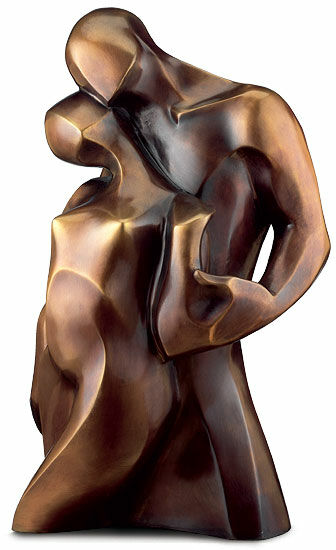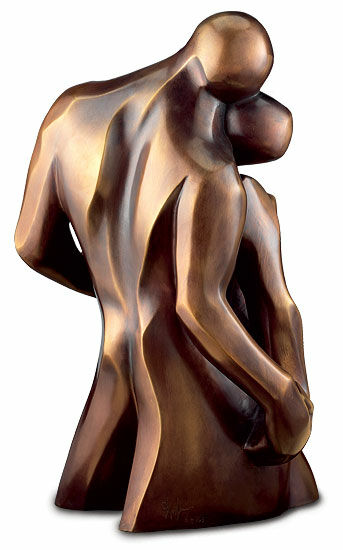Sculpture "Pas de Deux - The Path for Two", bronze
Sculpture "Pas de Deux - The Path for Two", bronze
Quick info
limited, 199 copies | numbered | signed | bronze | patinated | polished | size 22 x 37 x 15 cm | weight approx. 9 kg
Detailed description
Sculpture "Pas de Deux - The Path for Two", bronze
Fine bronze sculpture, cast by hand using the Lost-Wax-Process, patinated and polished by hand. Limited edition 199 copies, numbered and signed. Size 22 x 37 x 15 cm, weight approx. 9 kg.
About Bernard Kapfer
1945-2021
"If you don't shy away from a difficult task, it will give you beautiful children," is how tongue-in-cheek Bernard Kapfer explains the key to his art.
Born in Paris in 1945, the sculptor studied at the "L'École des Arts Décoratifs" in Nice, where he devoted himself exclusively to painting and drawing for many years before sculpture became the focus of his work.
Kapfer, who lived in Alsace, set out in perfect technique in search of archetypal forms. He oriented his work on the great tradition of the Renaissance. The study of the great masterpieces of this classical period, and their contemporary reinterpretation was his path for the art of the 21st century.
Bernard Kapfer's works are internationally known through numerous exhibitions in France, Monte Carlo, Italy, Switzerland, Germany and Hong Kong. The artist passed away in 2021.
An alloy of copper with other metals (especially with tin) used since ancient times.
When casting bronze, the artist usually applies the lost-wax technique which is dating back more than 5000 years. It's the best, but also the most complex method of producing sculptures.
First, the artist forms a model of his sculpture. It is embedded in a liquid silicone rubber mass. Once the material has solidified, the model is cut out. The liquid wax is poured into the negative mould. After cooling down, the wax cast is removed from the mould, provided with sprues and dipped into ceramic mass. The ceramic mass is hardened in a kiln, whereby the wax flows out (lost mould).
Now we finally have the negative form, into which the 1400° C hot molten bronze is poured. After the bronze had cooled down, the ceramic shell is broken off and the sculpture is revealed.
Now the sprues are removed, the surfaces are polished, patinated and numbered by the artist himself or, to his specifications, by a specialist. Thus, each casting becomes an original work.
For lower-quality bronze castings, the sand casting method is often used which, however, does not achieve the results of a more complex lost-wax technique in terms of surface characteristics and quality.
Term for an art object (sculpture, installation), which is produced in multiple copies in a limited and numbered edition according to the artist‘s will.
Artist's multiples have been called the most accessible and affordable art on the market.
A plastic work of sculptural art made of wood, stone, ivory, bronze or other metals.
While sculptures from wood, ivory or stone are made directly from the block of material, in bronze casting a working model is prepared at first. Usually, it is made of clay or other easily mouldable materials.
The prime time of sculpture after the Greek and Roman antiquity was the Renaissance. Impressionism gave a new impulse to the sculptural arts. Contemporary artists such as Jorg Immendorf, Andora, and Markus Lupertz also enriched sculptures with outstanding works.






